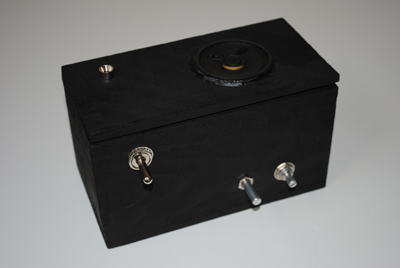
This is my version of the Make Magazine "$5 Cracker Box Guitar
Amp."
When gathering the parts the build it, the first thing I realized that
the title was totally misleading. The 25-ohm rheostat, which acts
as the volume control, was $4.25 alone, and could only be found
at Radio Shack (a few online distros sold them for $5+). It probably
cost me just under $15 to build, While most electronic hobbyists will
have a pile of
resistors, capacitors and switches lying around, if
you don't, it could add $5-$10.
I built it in stages, starting with the circuit. Although I'm learning,
reading schematics can be a head-scratcher, so I used the layout
I found here and made it work for the small circuit board I was using
to piece everything together.
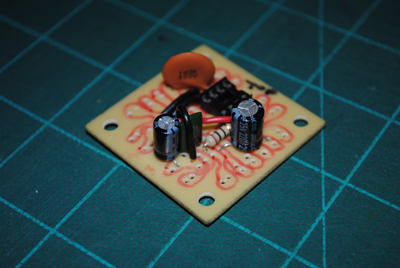
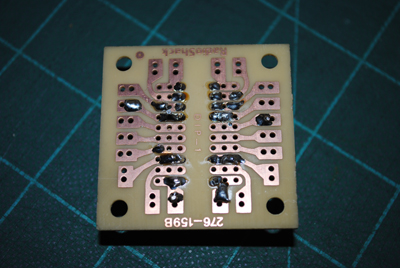
The only piece missing is the LM386 chip, which I plugged into the
socket after soldering everything together.
The next step was to find a housing. I wanted something more permanent
than a Ritz Cracker box so I asked around to see if anyone had a cigar
box lying around, but after coming up empty, I'd figured I'd just build
my own.
I bought a 51¢ piece of quarter-inch thick "breaker board," cut it up
into 6- and 2.5-inch pieces and glued everything together. The lid
was attached with 2 small hinges after cutting the two-inch hole for
the speaker.

The next step was to drill the holes to mount the potentiometer,
rheostat, 1/4-inch input jack, the on/off switch and the LED holder.
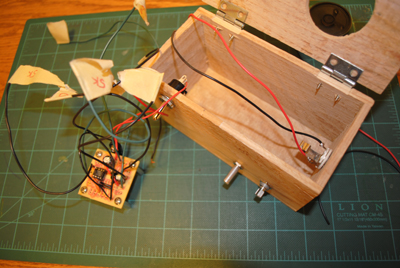
Here's where I started to realize my design might have some flaws.
My first issue was the thickness of the wood. The threads on everything
but the rheostat were designed for housings thinner than 1/4 inch. I
used a small file to taper everything so I could actually get the nut to
thread on to the part.
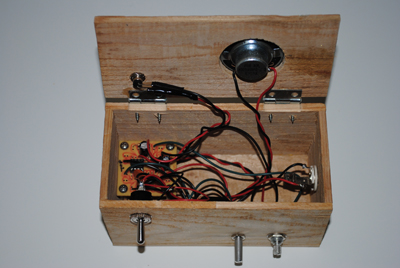
Once everything was soldered together, I plugged in a 9-volt was
shocked because A) it actually worked and I didn't create any short
circuits, and B) it was loud and had a nice crunch when the gain was
cranked.
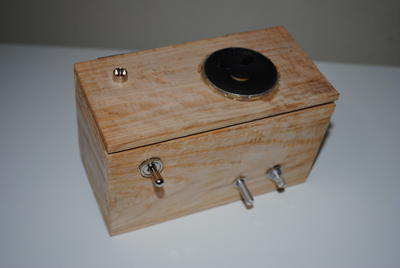
After finishing everything up, I realized why most guitar amps have
open backs. When the lid it closed, the wood housing gives it a big,
loud, almost '70s tone, but when open, it has a straight-ahead overdrive
crunch. By opening and closing the lid, I get two completely different
sounds from the same $2 speaker.
This led me to my second design issue: the direction of the lid.
Since the two different tones are determined by whether the lid is
open or closed, I should have designed it so the lid opens with the
speaker
facing the controls. The way the hinges were placed, the lid
opens away from the controls.
The last step was paint the box. Black spray paint did the trick.
Rock on!
